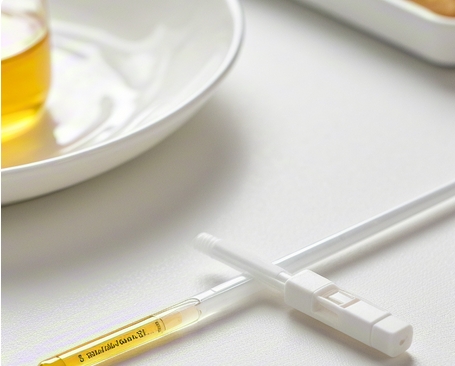
News and Blogs
Clinical application guide for throat swabs: in-depth analysis of the three major infection types and key points for testing
As a commonly used clinical sampling tool, its application scope and diagnostic value are worthy of in-depth discussion. In the field of throat microbial detection, this specially designed sampling swab can effectively obtain mucosal surface secretions, providing a key basis for the diagnosis of respiratory infection. According to clinical guidelines released by the US CDC, standardized pharyngeal swab sampling can increase the detection rate of pathogens to 82%-95%.
From an anatomical perspective, as a respiratory portal, the throat has a mucosal barrier function that is susceptible to external pathogens. When the body's immunity decreases or comes into contact with high concentrations of pathogenic bacteria, the normal bacterial balance of the colonization is broken, which may cause infectious diseases such as acute pharyngitis and suppurative tonsillitis. Clinical data show that among children's respiratory infection cases, about 60% of streptococcal pharyngitis is diagnosed through pharyngeal swab culture.
In terms of clinical application, the main indications of pharyngeal swabs include: 1. Bacterial infection: acute pharyngeal inflammation caused by beta hemolytic streptococci (accounting for 25%-30% of outpatient cases) 2. Fungal infection: Candida pharyngitis in immunodeficient patients 3. Specific infection: Membrane pharyngitis caused by diphtheria 4. Atypical pathogen: Resilient dry cough caused by Mycoplasma pneumoniae
Standardizing the sampling process directly affects the accuracy of detection. According to the operating standards of the Chinese Medical Association’s Inspection Branch, the correct steps should include: first check the patient’s information and explain the key points of the operation, and guide the patient to rinse his mouth with normal saline to remove oral impurities. During sampling, you need to quickly wipe the bilateral palatal arch, tonsillar crypt and posterior pharyngeal wall mucosa with a sterile swab. Rotate the swab 3-5 times to ensure that sufficient epithelial cells are obtained. It is worth noting that excessive sampling force will lead to mucosal bleeding and affect the culture results, and the operation time should be controlled within 5 seconds.
Pathogenic tests show that there are geographical differences in common pathogenic bacteria in respiratory tract infection. The northern region is mainly Streptococcus pneumoniae (detection rate 38.7%), while the southern region is more common in Haemophilus influenzae (detection rate 41.2%). When combined with CT imaging, the diagnostic compliance rate of pharyngeal swab culture for lower respiratory tract infection can be increased to 79.6%. For patients with persistent fever and sore throat, it is recommended to complete the sampling before antibiotic use to avoid false negative results.
In terms of clinical interpretation, it is necessary to note that healthy people can carry conditioned pathogenic bacteria such as Streptococcus pneumoniae (carrying rate 5%-10%) in their throats, so they need to make a comprehensive judgment based on inflammatory indicators such as leukocyte count and C-reactive protein. For patients with recurrent chronic pharyngitis, it is recommended to conduct drug sensitivity tests to guide precise medication, which can increase the treatment efficiency from 68% to 92%.
Standardized sampling operation process 4. Key steps for specimen collection Operators need to place swab heads vertically to avoid cross-contamination caused by contact with the sampling tube wall. Use sterile tweezers to hold the swab rod, accurately break the tail 1 cm away from the tube mouth, and immediately tighten the biosafety tube cover. This step must be completed in the biosafety cabinet and carried out in accordance with the WHO secondary protection standards.
5. After the information verification process is completed, the patient's identity information must be checked by two people, and the triple verification mechanism of "name-idle ID number-sample number" is adopted.
It is recommended to use an electronic code scanning system to match data to ensure that the accuracy of information entry exceeds 99.9%.
6. Specimen treatment specifications. Each specimen must be clearly marked with the collection time (accurate to minutes), and transported in a cold chain transport box at 2-8℃. According to the clinical laboratory accreditation criteria (CAP standard), the sampling to inspection should be controlled within 4 hours, and special pathogen testing must be delivered within 30 minutes.
Key points of quality control 1. Operation specifications for sampling containers. The pharyngeal swab must be inserted vertically into the virus storage liquid, and the liquid level should be soaked in more than 2/3 of the swab head. The sampling tube is fixed in the transport box. According to the CDC transportation standard, the interval between each pipe must be maintained at an anti-collision distance of more than 3cm.
2. The deadline for the timeliness management standard laboratory reception should be set before 16:00 every day. Delayed inspection must be stored using dry ice. Research data shows that specimens not sent for testing for more than 24 hours may cause a 35% reduction in pathogen load, significantly affecting detection sensitivity.
3. Inspection document management. Each batch of specimens must be accompanied by inspection form signed by biosafety training personnel, and they are separately packaged in waterproof sealed bags. Special attention: The barcode of the specimen tube must match the inspection form 100% and any missing information will trigger the rejection procedure stipulated in ISO15189.
Precautions for professional operation 4. The subject is prepared to prepare and requires confirmation that the patient's fasting time meets the standards before sampling. It is recommended to arrange it 3-4 hours after the last meal. The "three fast methods" are used during operation: fast exposure, fast sampling, and fast evacuation. The average operating time is controlled within 8 seconds to minimize the pharyngeal reflex of the subject.
5. Scanning accuracy control strictly implements the "three no contact" principle: the swab head must not touch the uvula, gingival and buccal mucosa. Clinical data show that standardized operations can increase the pass rate of specimens to 98.5%, while illegal operations may lead to 30% false negative results.






